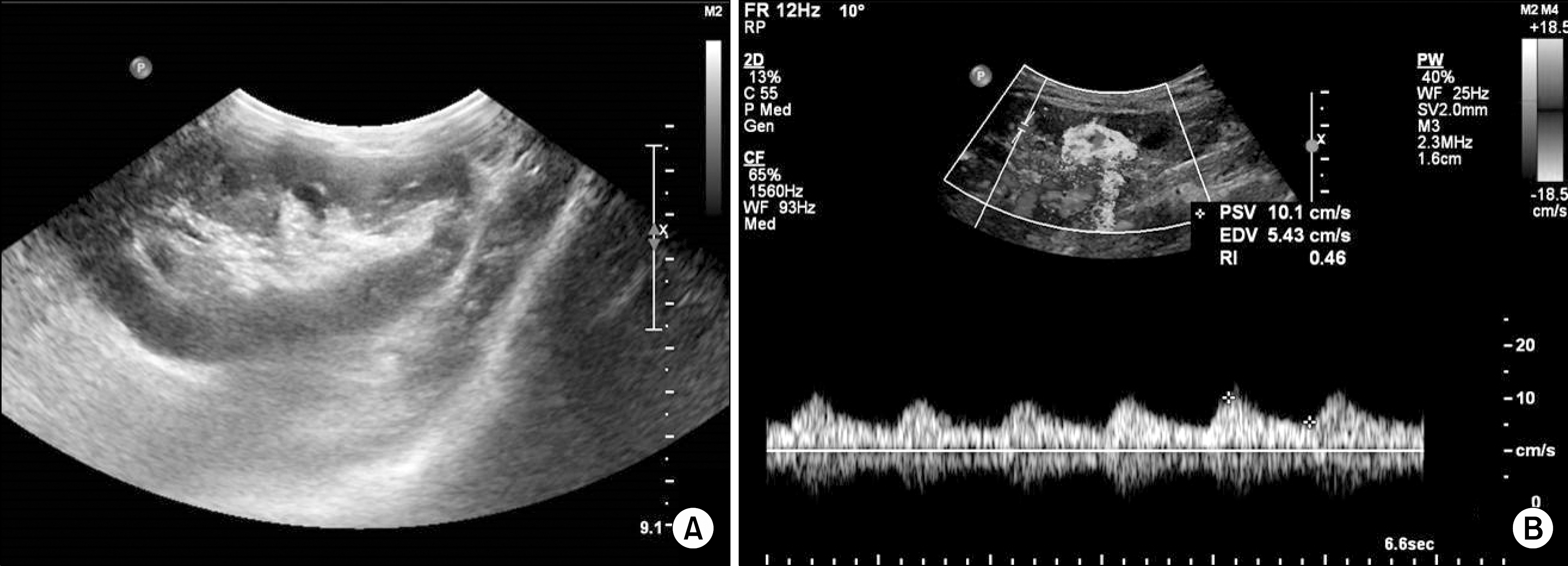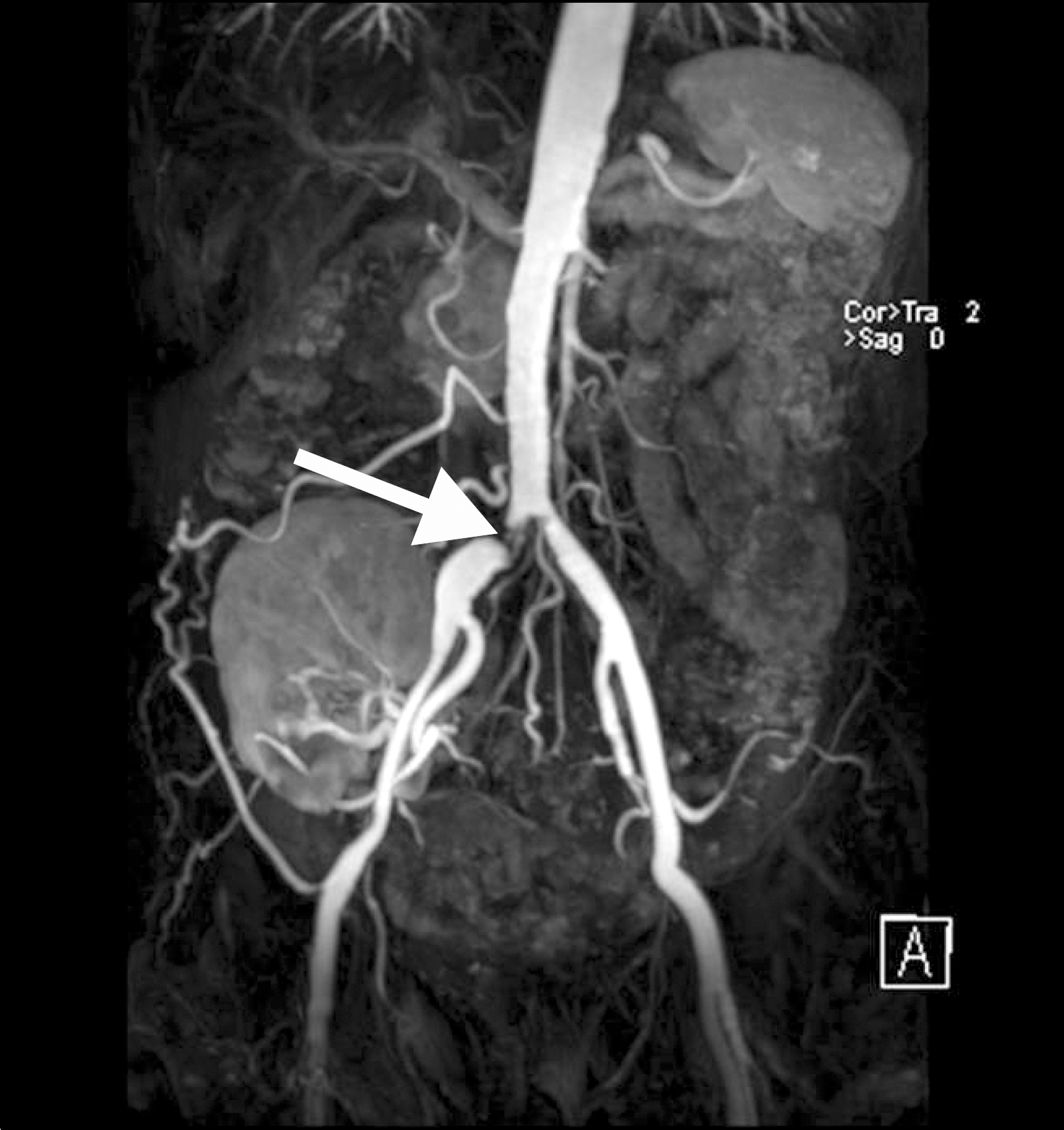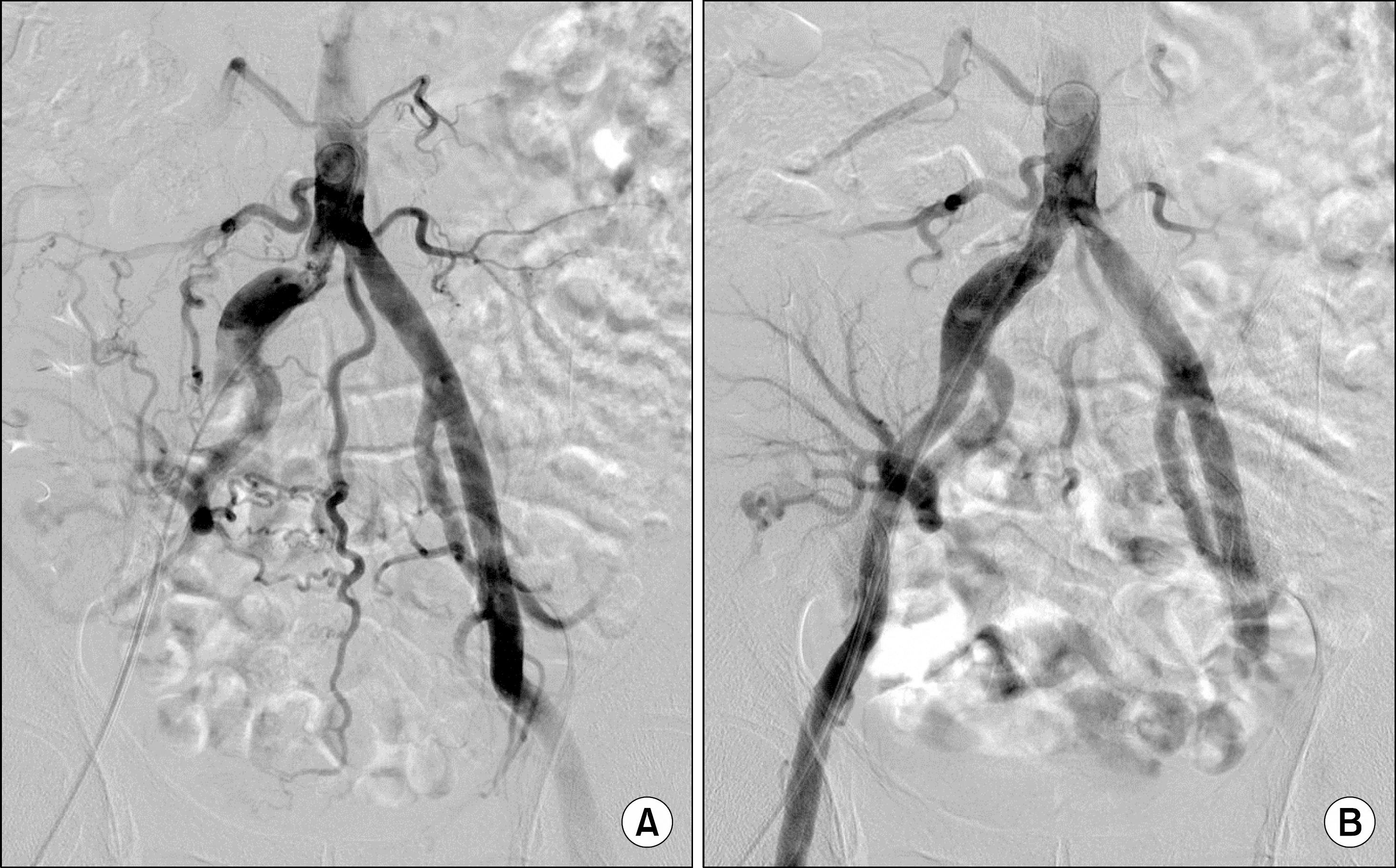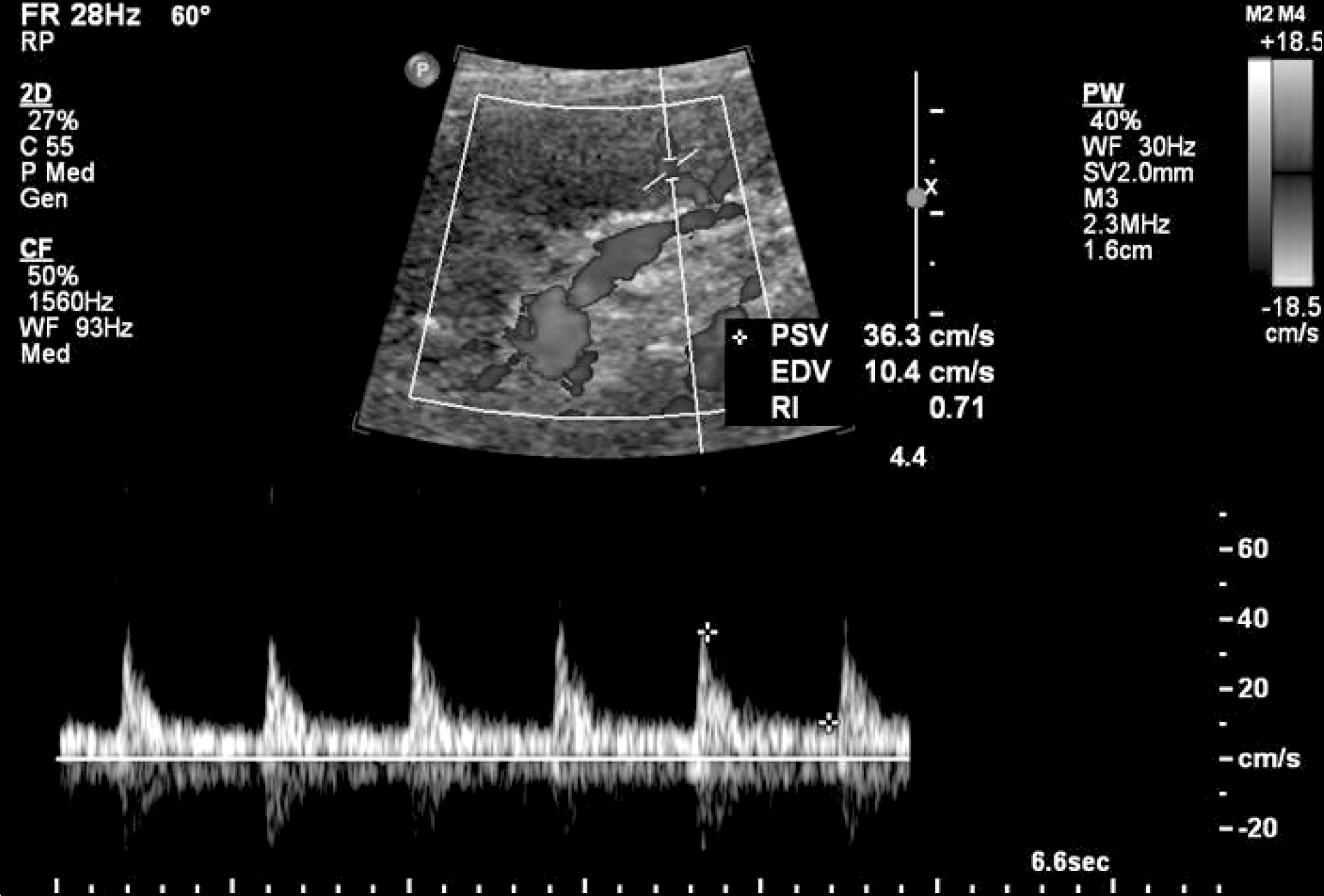Abstract
Occlusive disease of the iliac segment, proximal to the transplant artery (prox-TRAS), in kidney transplant recipients is a rare complication. Prox-TRAS, located in the common iliac artery, is extremely rare in these patients. Herein, we present an interesting case of a common iliac artery stenosis that manifested as decreased allograft function and uncontrolled blood pressure without other typical clinical symptoms. The patient was successfully treated with percutaneous luminal angioplasty and stent insertion.
Go to : 
REFERENCES
1). Lacombe M. Arterial stenosis complicating renal allotransplantation in man: a study of 38 cases. Ann Surg. 1975. 181:283–8.
2). Merkus JW., van Asten WN., Hoitsma AJ., Buskens FG., Koene RA., Skotnicki SH. Iliac artery stenosis after kidney transplantation. Acta Chir Belg. 1993. 93:242–8.
3). Aslam S., Salifu MO., Ghali H., Markell MS., Friedman EA. Common iliac artery stenosis presenting as renal allograft dysfunction in two diabetic recipients. Transplantation. 2001. 71:814–7.

4). Weigele JB. Iliac artery stenosis causing renal allograft-mediated hypertension: angiographic diagnosis and treatment. AJR Am J Roentgenol. 1991. 157:513–5.

5). Polytimi L., Sofia G., Paris P. Close to transplant renal artery stenosis and percutaneous transluminal treatment. J Transplant. 2011. 2011:219109.

6). Becker BN., Odorico JS., Becker YT., Leverson G., McDermott JC., Grist T, et al. Peripheral vascular disease and renal transplant artery stenosis: a reappraisal of transplant renovascular disease. Clin Transplant. 1999. 13:349–55.

7). Voiculescu A., Hollenbeck M., Plum J., Hetzel GR., Modder U., Pfeiffer T, et al. Iliac artery stenosis proximal to a kidney transplant: clinical findings, duplex-sonographic criteria, treatment, and outcome. Transplantation. 2003. 76:332–9.

8). Pappas P., Zavos G., Kaza S., Leonardou P., Theodoropoulou E., Bokos J, et al. Angioplasty and stenting of arterial stenosis affecting renal transplant function. Transplant Proc. 2008. 40:1391–6.

9). Voiculescu A., Schmitz M., Hollenbeck M., Braasch S., Luther B., Sandmann W, et al. Management of arterial stenosis affecting kidney graft perfusion: a single-centre study in 53 patients. Am J Transplant. 2005. 5:1731–8.

10). Ghorbani A., Shirazi AS., Sametzadeh M., Mansoori P., Taheri A. Relation of resistive and pulsatility indices with graft function after renal transplant. Exp Clin Transplant. 2012. 10:568–72.

11). Sommerville RS., Jenkins J., Walker P., Olivotto R. 3-D magnetic resonance angiography versus conventional angiography in peripheral arterial disease: pilot study. ANZ J Surg. 2005. 75:373–7.

12). Bruno S., Remuzzi G., Ruggenenti P. Transplant renal artery stenosis. J Am Soc Nephrol. 2004. 15:134–41.
13). Dourado R., Goncalves Pde A., Almeida M., Weigert A., Bruges M., Gaspar A, et al. Peripheral artery disease: a cause of refractory hypertension after renal transplantation. Rev Port Cardiol. 2008. 27:353–7.
Go to : 
 | Fig. 1.Color Doppler ultrasonography showing (A) normal size and echogenicity of the transplant kidney and (B) low resistive index and pulsus parvus et tardus of flow pattern in the intrarenal artery: stenosis proximal to the transplant renal artery. |
 | Fig. 2.Magnetic resonance angiography showing segmental occlusion of right common iliac artery (white arrow). |




 PDF
PDF ePub
ePub Citation
Citation Print
Print




 XML Download
XML Download